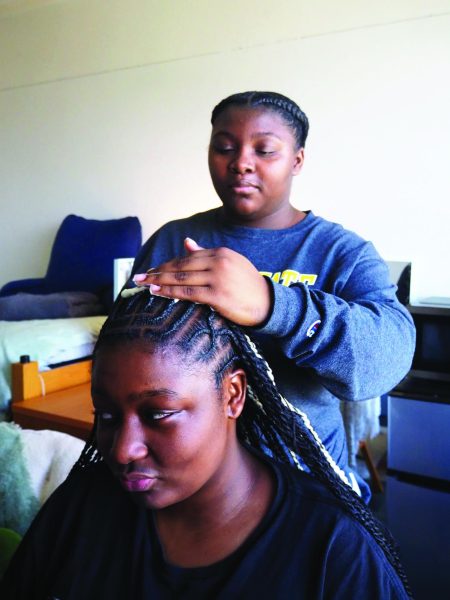Counseling helps Wayne students fight SAD
November 13, 2019
Short days and long nights mark the beginning for many students’ struggles with the psychological and physical symptoms of seasonal depression, or what is medically known as Seasonal Affective Disorder.
Throughout the seasonal transition, Wayne State College continues to provide resources for students struggling with Seasonal Affective Disorder. SAD has been a popular topic in recent years as studies have exposed it as a more prevalent health issue to college students than previously thought.
According to a journal from Depression Research and Treatment, the onset of symptoms for SAD is estimated to be between 18 and 30 years.
Jayne Halsey, a licensed student counselor with the WSC Counseling Center, said she has noticed the recent generation becoming more accepting of mental health and the treatment thereof as a legitimate medical health issue.
“There appears to be less stigma with SAD due to most people understanding it to some degree near the end of winter,” Halsey said. “Even people without SAD relate to ‘cabin fever’ and being indoors too much and it slightly depresses their usual mood.”
For students on campus who are just discovering their ailments, help is around the corner.
“The Counseling Center is the primary resource through individual or group therapy services,” Halsey said. “Also, to connect with Active Minds, attend mental health functions offered by the counseling and education departments and engaging in social activities and clubs.”
Active Minds President Montana Hill said the organization provides a great support group, offering events and activities dedicated to all mental health issues no matter what people may stigmatize as big or small.
“We host mental health forums, promote the Counseling Center, and encourage people to have open conversations about mental health,” Hill said. “My favorite activities are ‘Trick or Treat the Counseling Center,’ because it gets people in the door and our self-love Valentine’s Day booth.”
According to the journal from Depression Research and Treatment, one percent of those who live in Florida and nine percent who live in Alaska experience SAD. As many Nebraskans know, the region is caught in the middle of all these extremities of seasonal weather. For someone with SAD, it can be daunting to study year in and year out through these changes. By mining campus resources for techniques and treatment, one can certainly assist their mind in overcoming the tough environment of the Great Plains.
“There are many ways to counteract it, such as seeing a counselor, getting medication, and light therapy,” Hill said. “There are lots of coping mechanisms, and personally, I like to shut my blinds in the evening so I can’t see how dark it is.”
Hill said it is important for students who may just be discovering their struggles with mental health to know the resources around them and not feel like they are alone.
“It’s okay not to be okay,” Hill said. “I encourage you to seek help and keep pushing because anyone who has to fight with their brain every day is brave, strong and a force to be reckoned with.”








